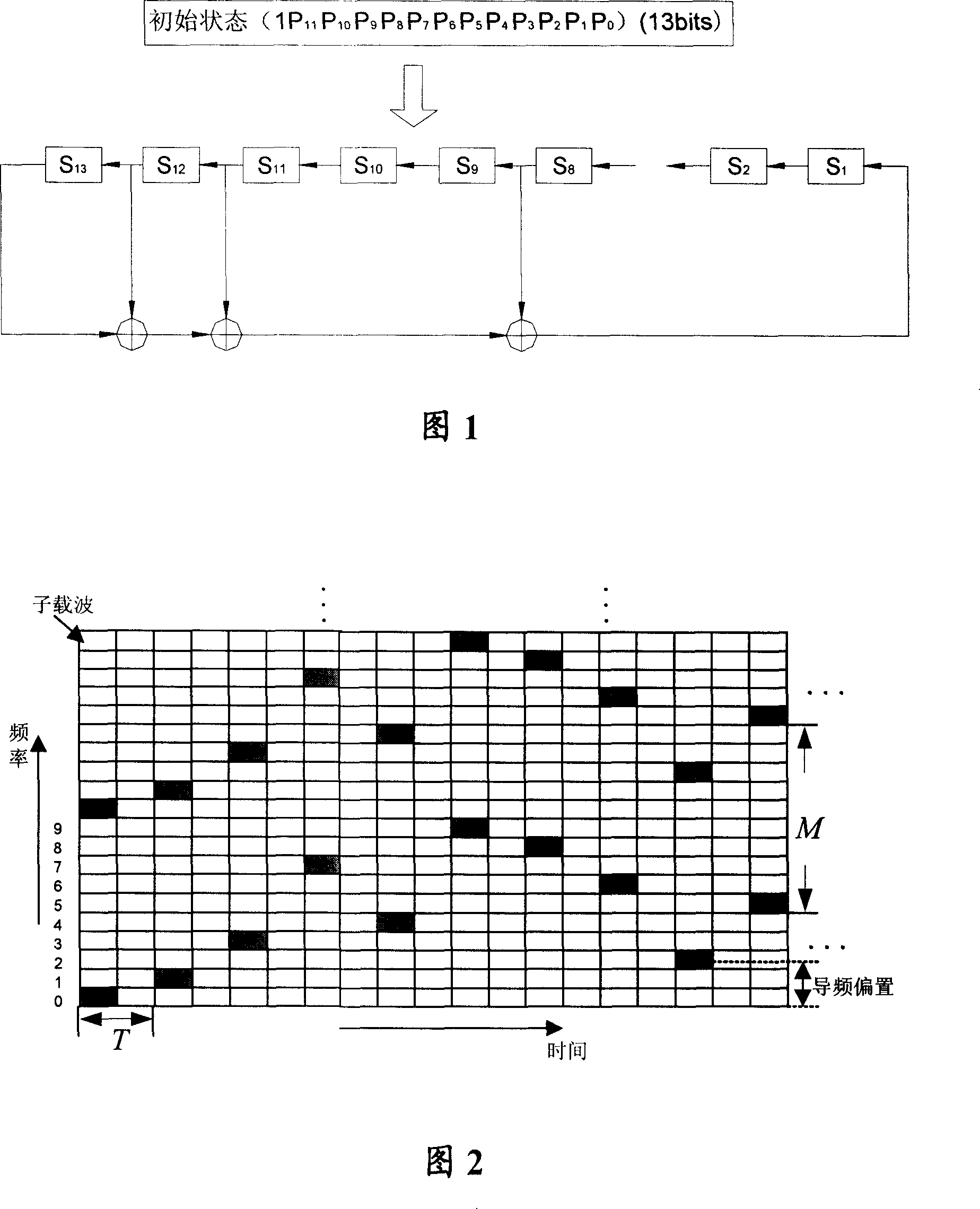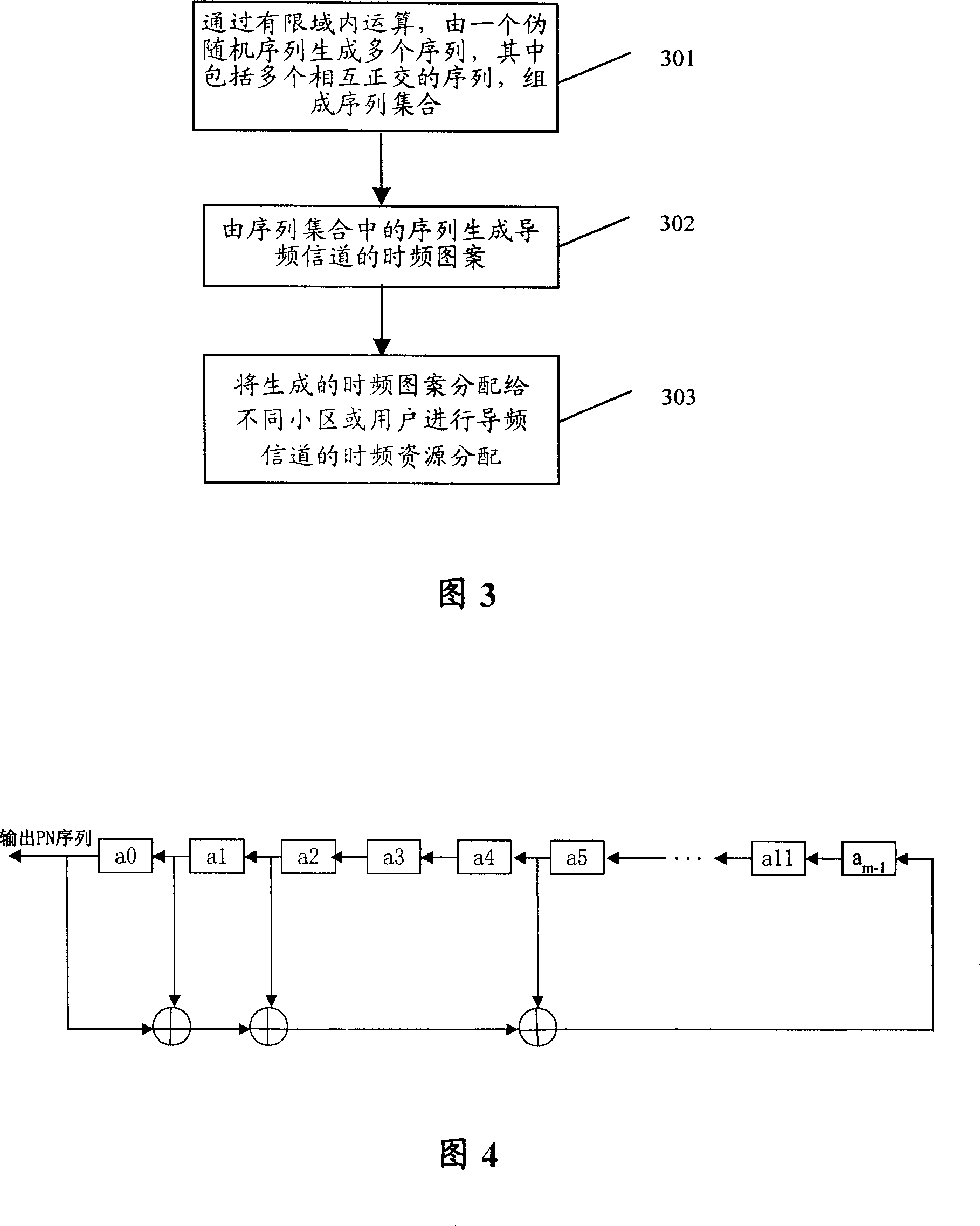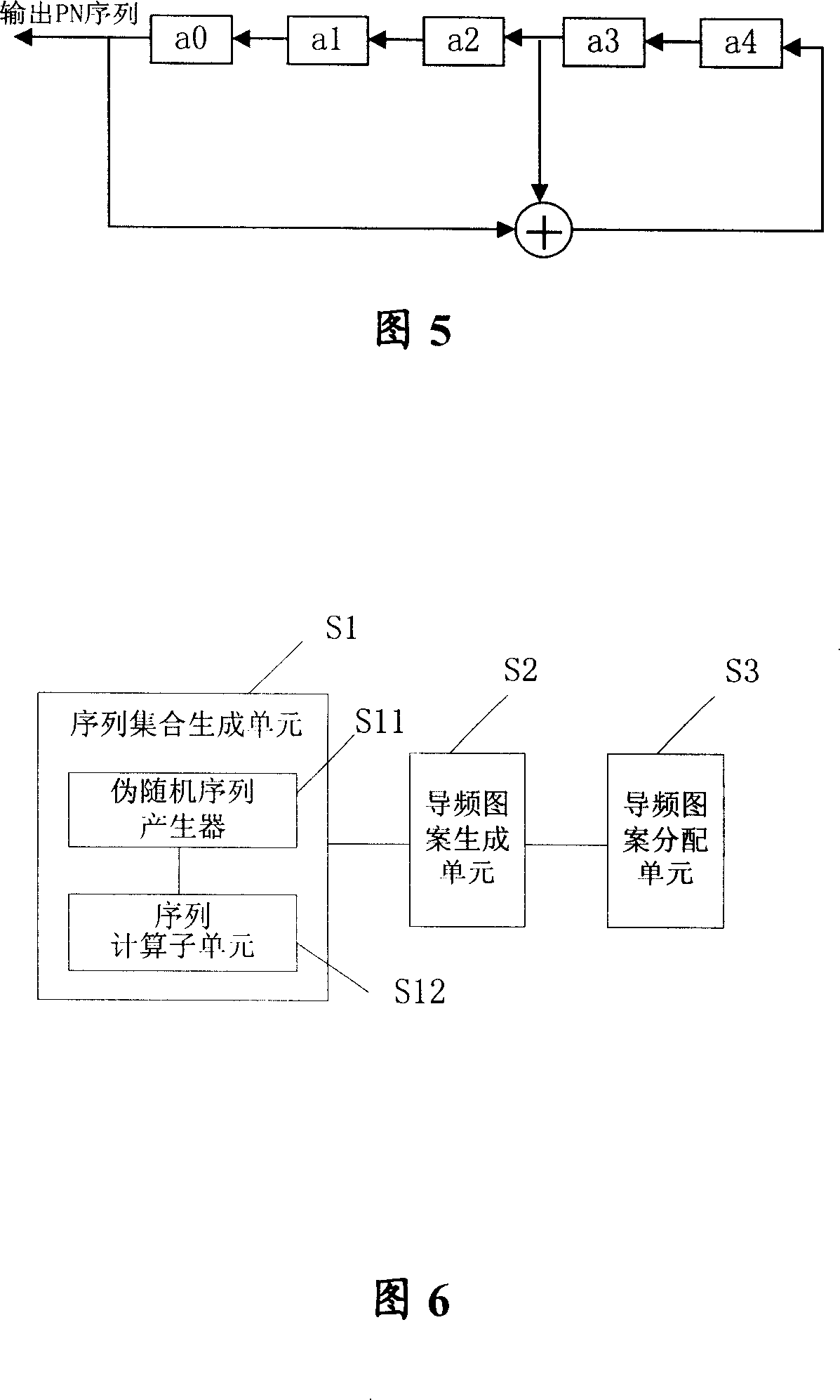Method, device and use for distributing pilot frequency channel time frequency source of multiple carrier communication system
A technology for multi-carrier communication and time-frequency resources, which is applied in the field of time-frequency resource allocation of pilot channels in multi-carrier communication systems, and can solve the problems of limited amount of available pilot pattern data, insufficient use of PN sequence autocorrelation and cross correlation, etc.
- Summary
- Abstract
- Description
- Claims
- Application Information
AI Technical Summary
Problems solved by technology
Method used
Image
Examples
Embodiment Construction
[0086] The core of the present invention is to use the autocorrelation and cross-correlation characteristics of PN (pseudo-random sequence) sequence, and use a certain PN sequence to generate a group of mutually orthogonal sequences or intersection points by calculating it in a finite field. Sequences to form a sequence set, and use the sequences in the sequence set to generate a larger number of pilot patterns that are mutually orthogonal or have a limited number of intersection points, and assign each sequence in the sequence set to a different cell to generate a pilot channel time-frequency pattern, and assign the generated time-frequency pattern to different cells or users for time-frequency resource allocation of the pilot channel.
[0087] In order to enable those skilled in the art to better understand the solution of the present invention, the present invention will be further described in detail below in conjunction with the accompanying drawings and embodiments.
[0...
PUM
 Login to View More
Login to View More Abstract
Description
Claims
Application Information
 Login to View More
Login to View More - R&D
- Intellectual Property
- Life Sciences
- Materials
- Tech Scout
- Unparalleled Data Quality
- Higher Quality Content
- 60% Fewer Hallucinations
Browse by: Latest US Patents, China's latest patents, Technical Efficacy Thesaurus, Application Domain, Technology Topic, Popular Technical Reports.
© 2025 PatSnap. All rights reserved.Legal|Privacy policy|Modern Slavery Act Transparency Statement|Sitemap|About US| Contact US: help@patsnap.com



